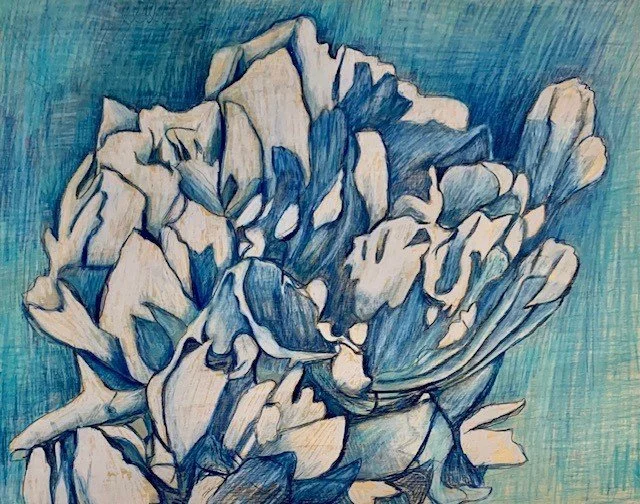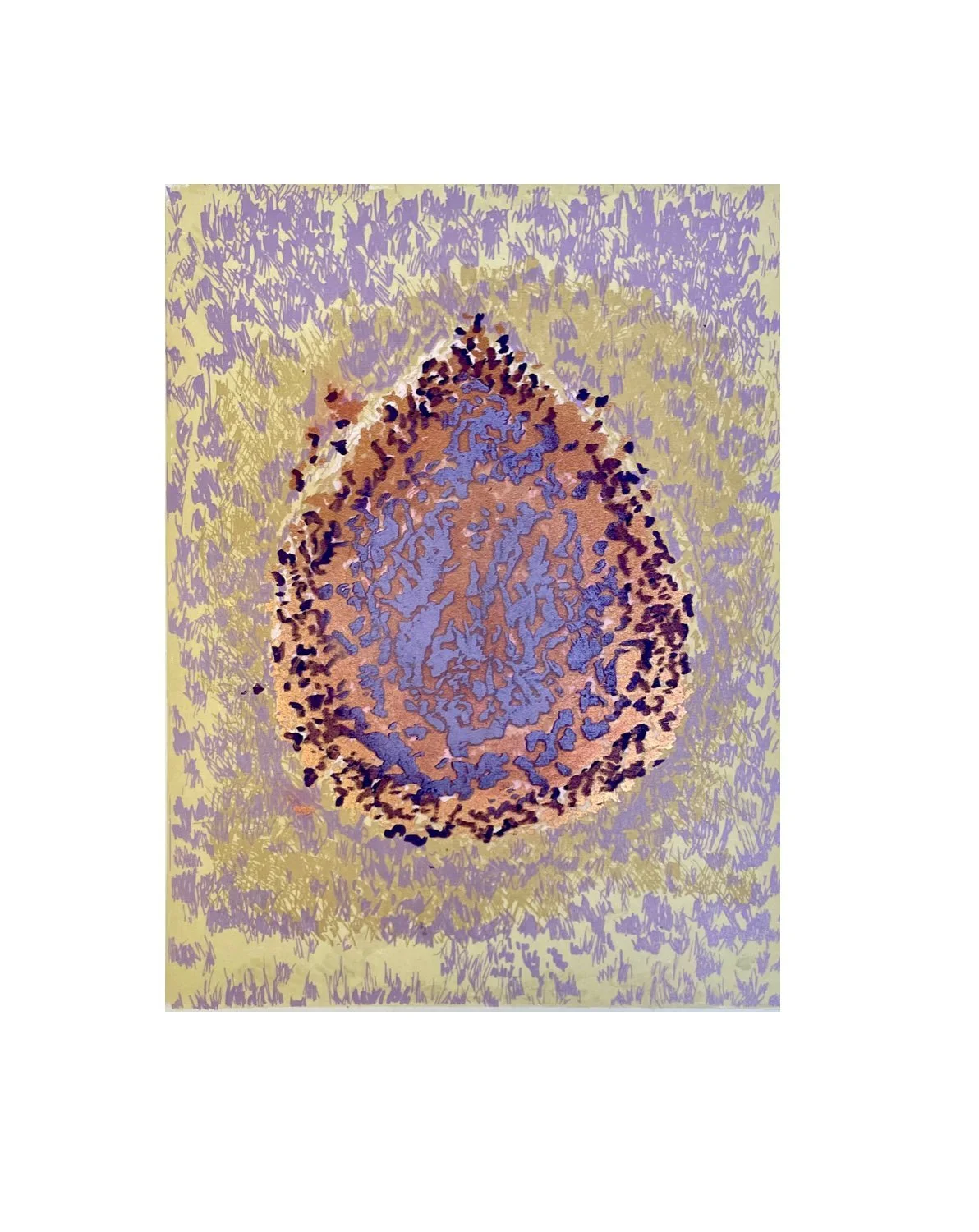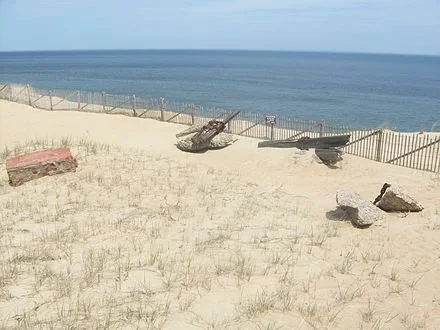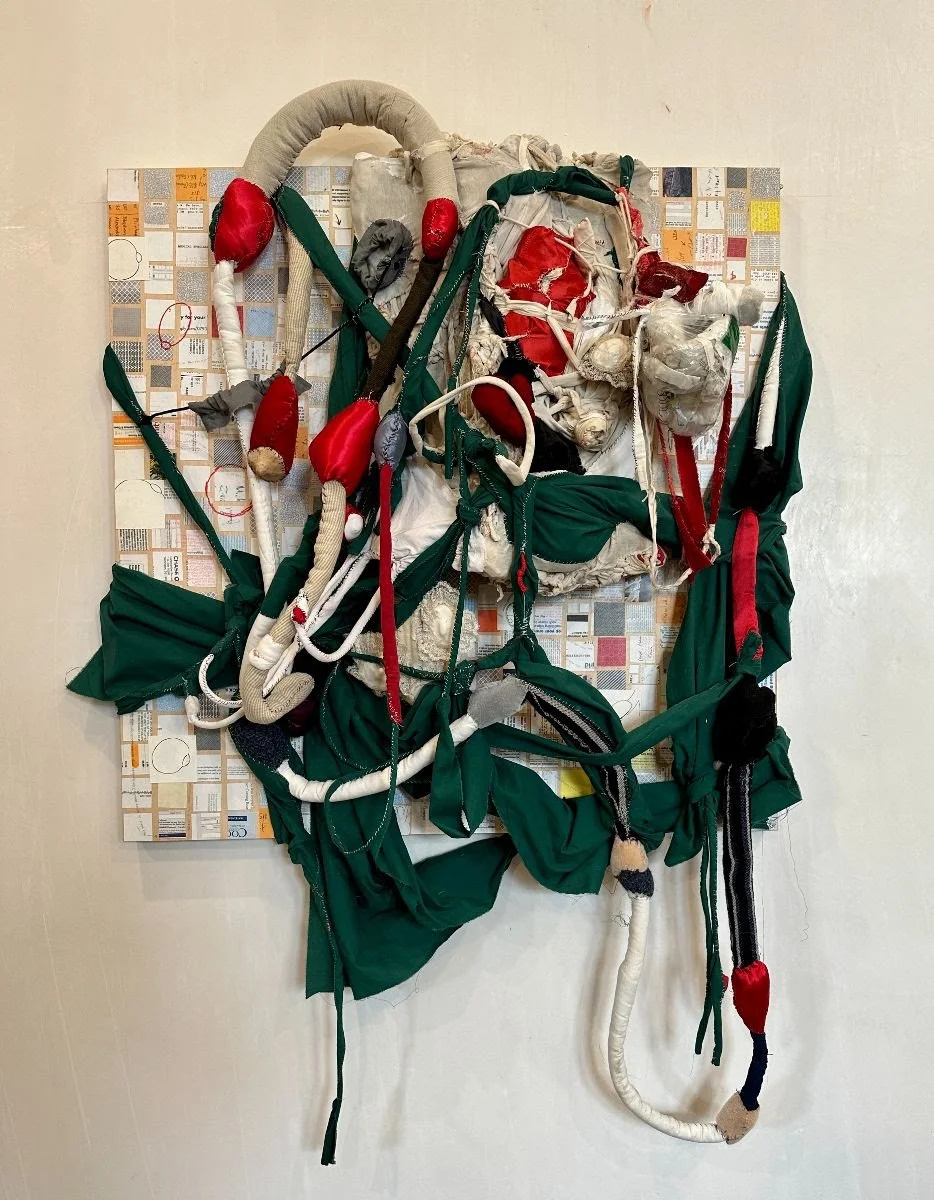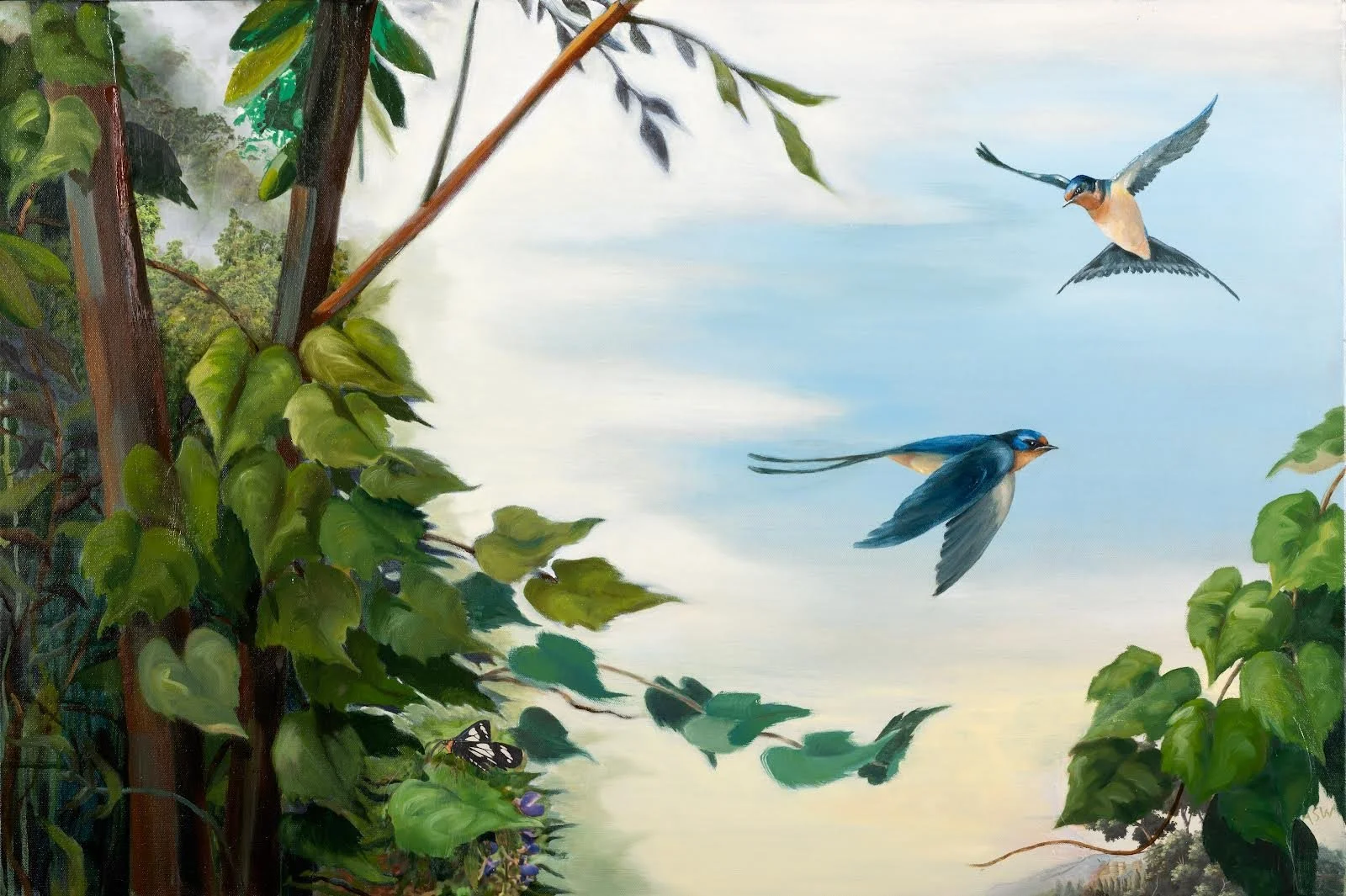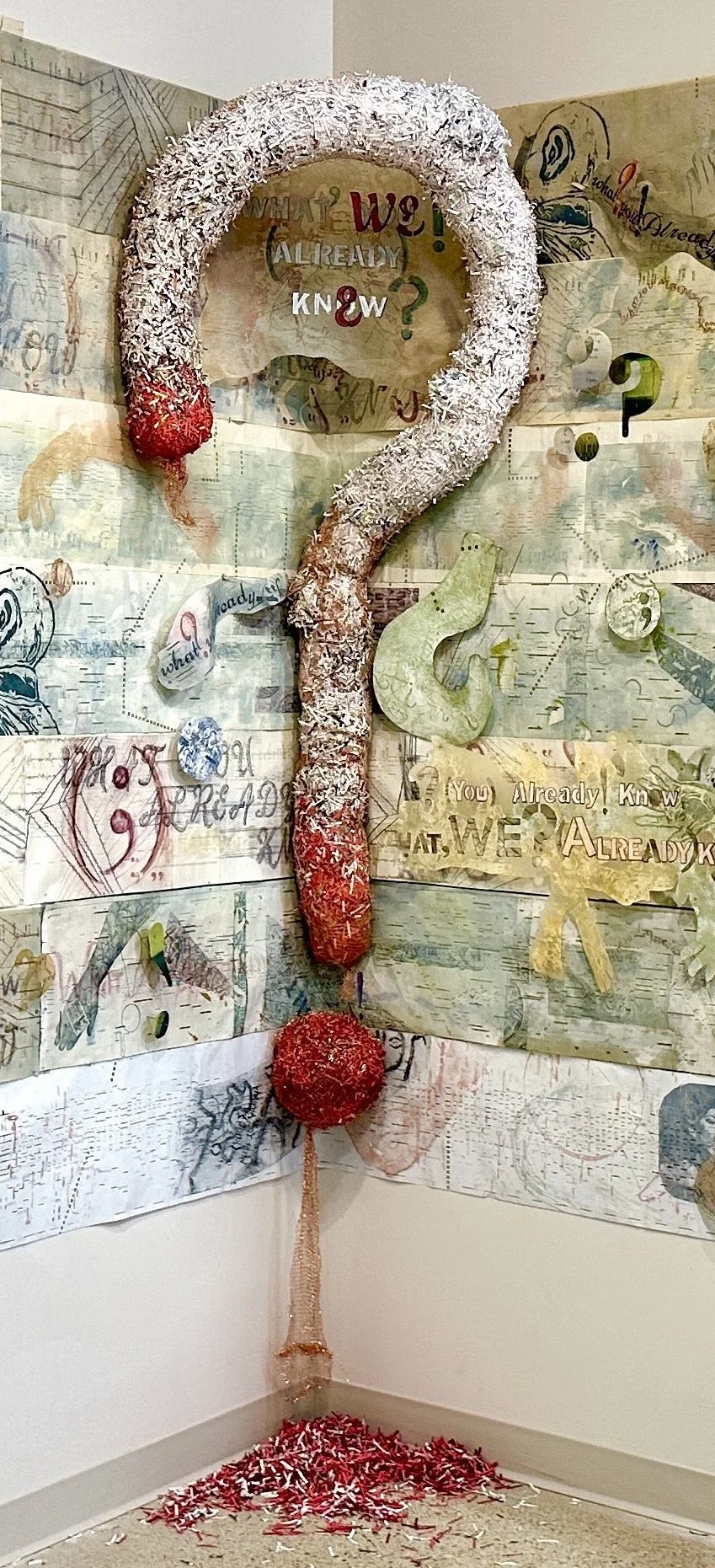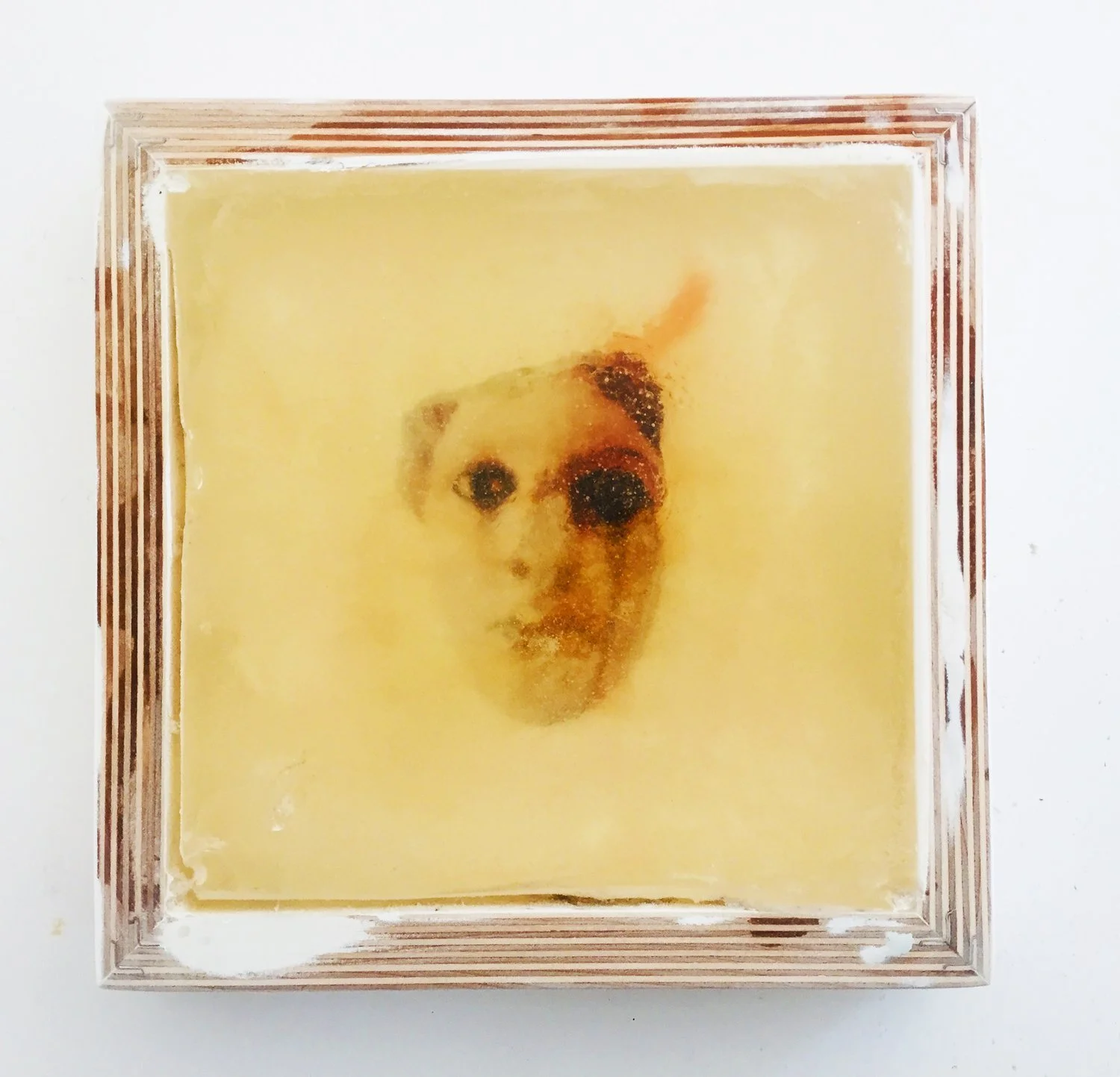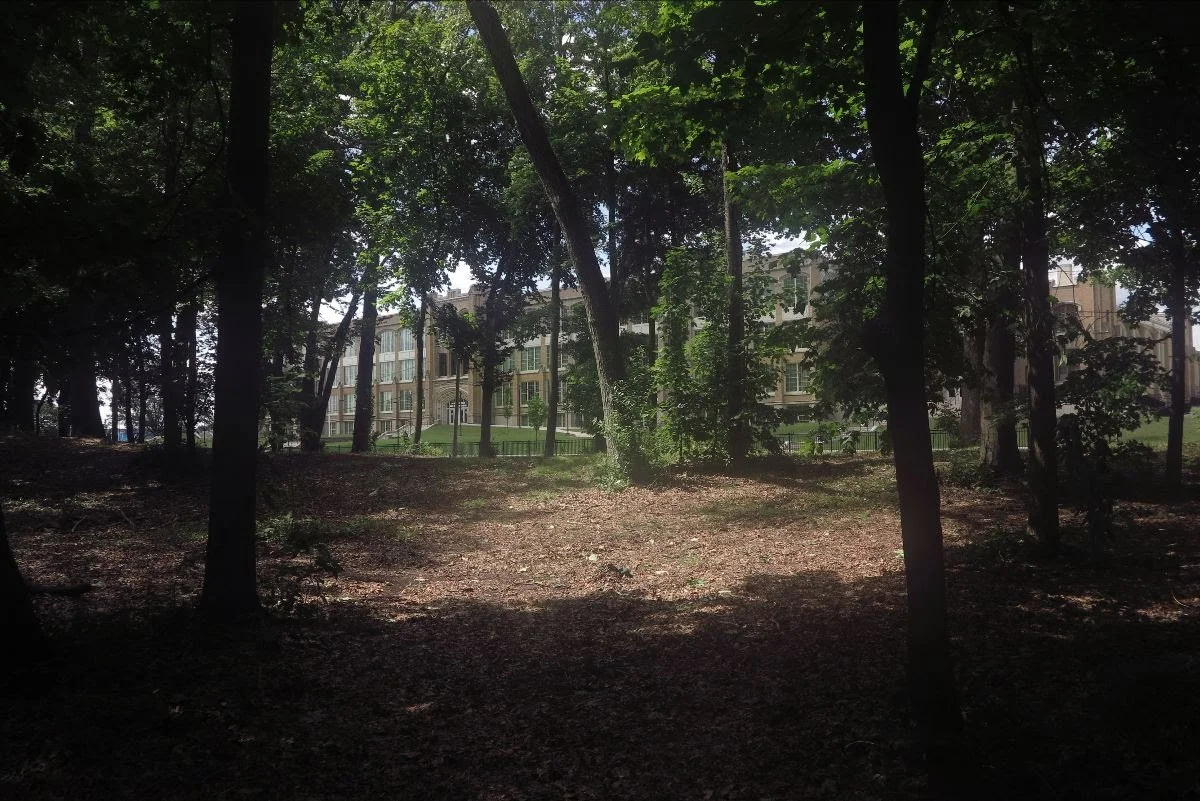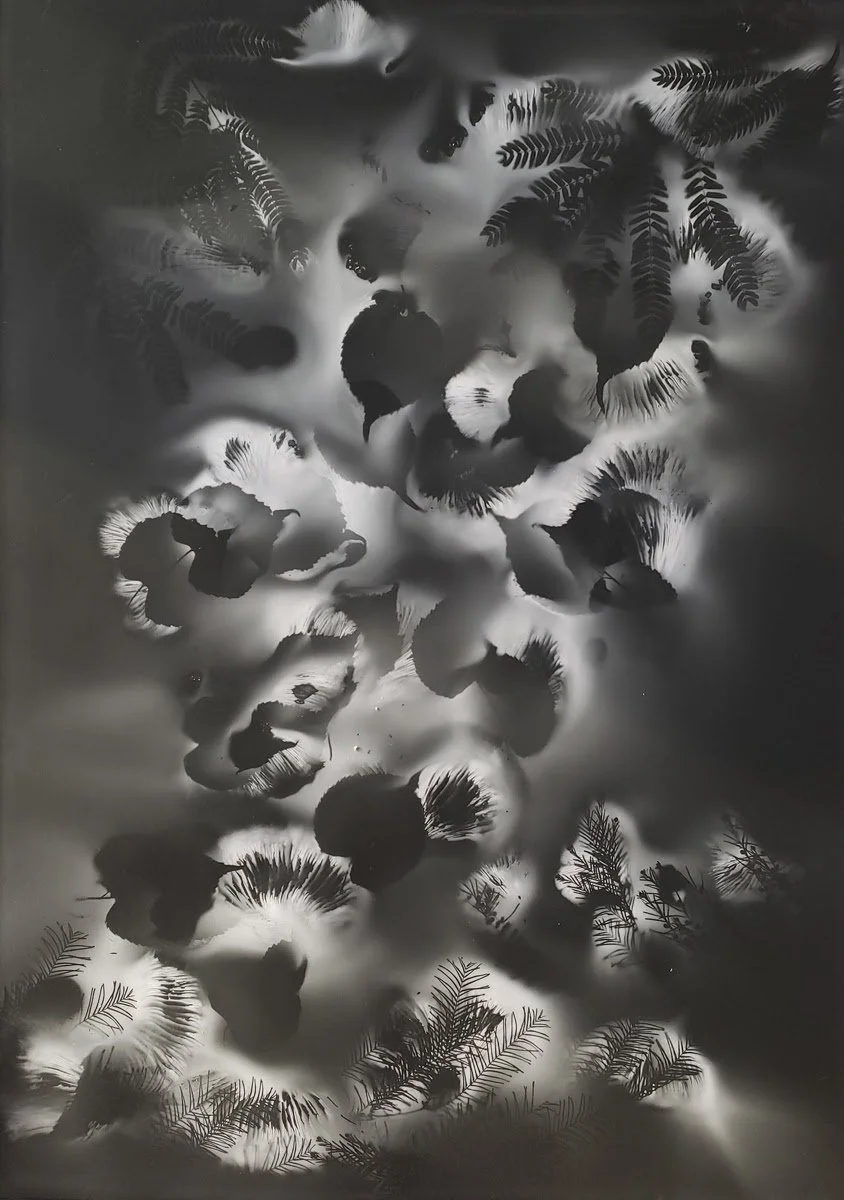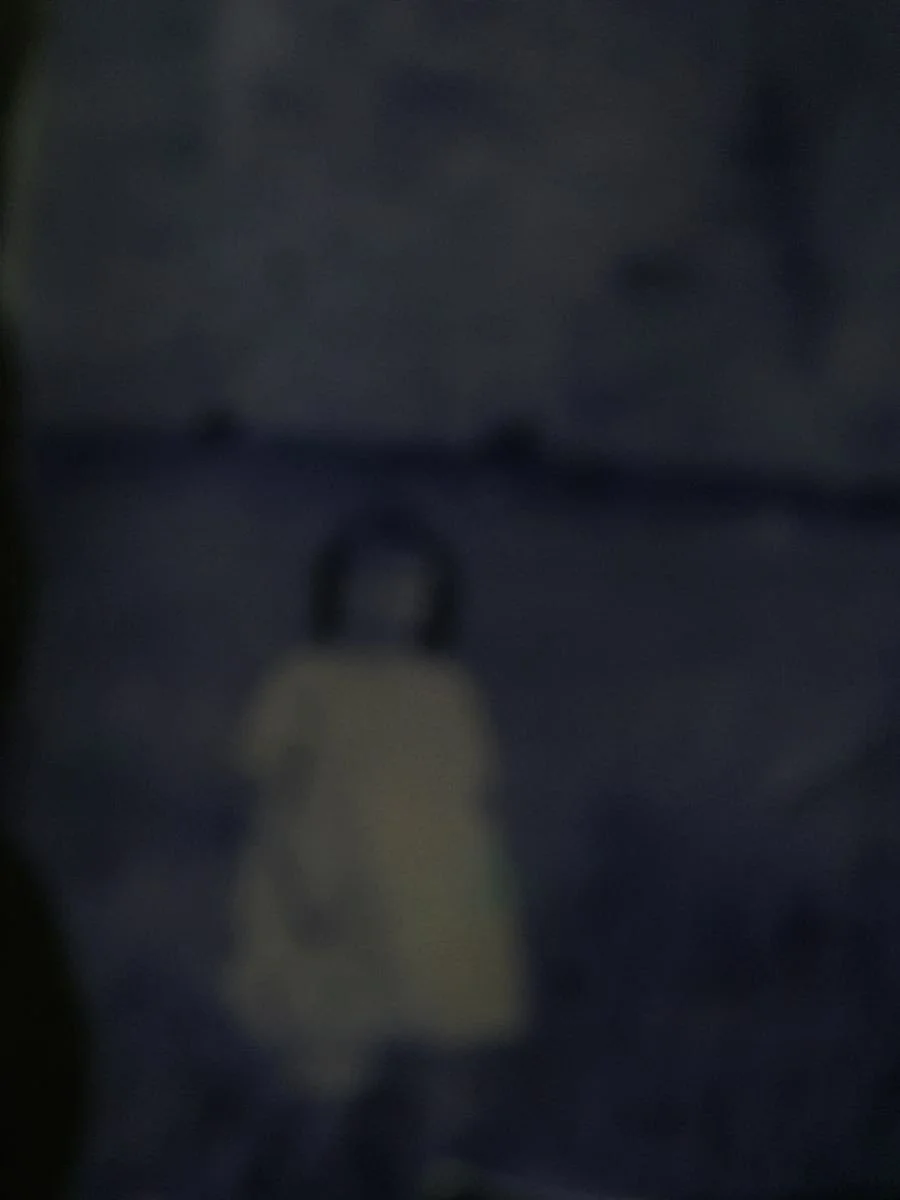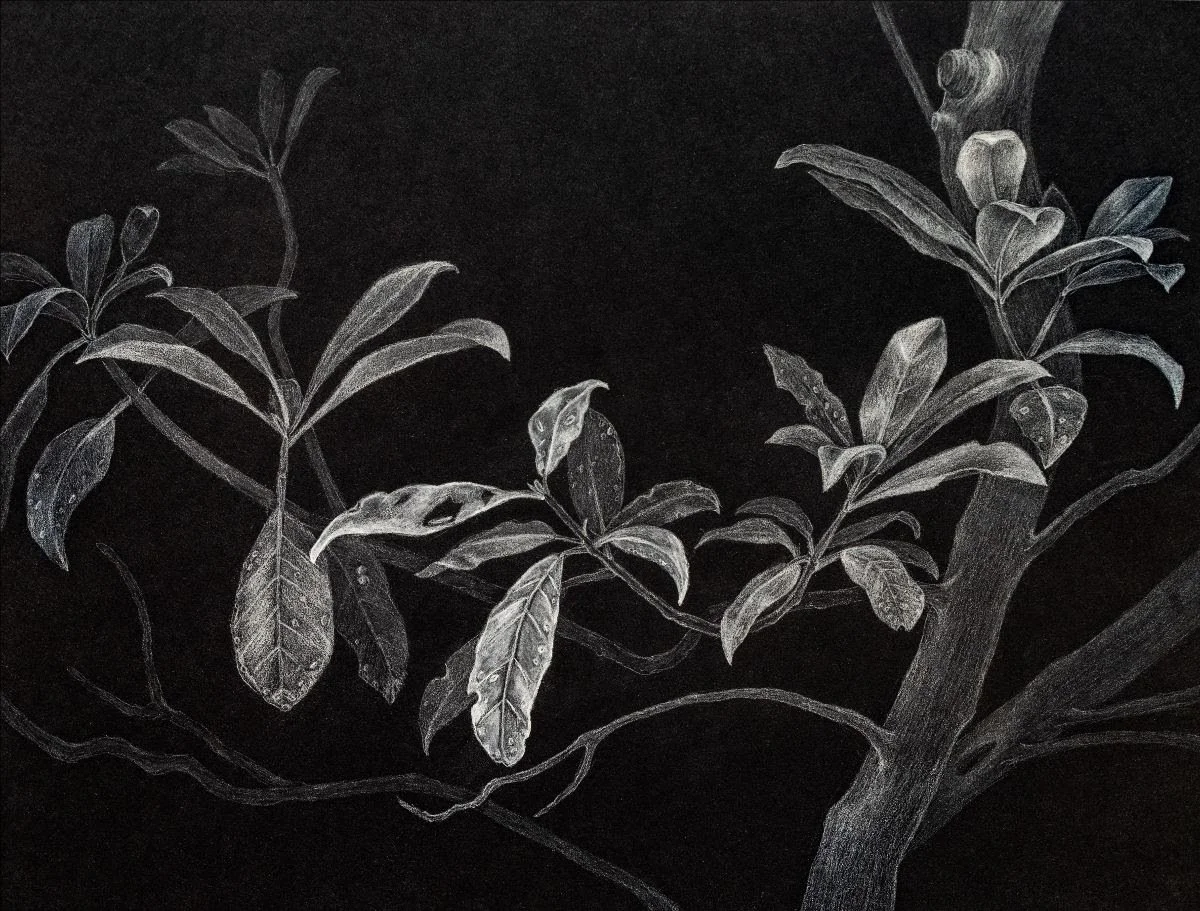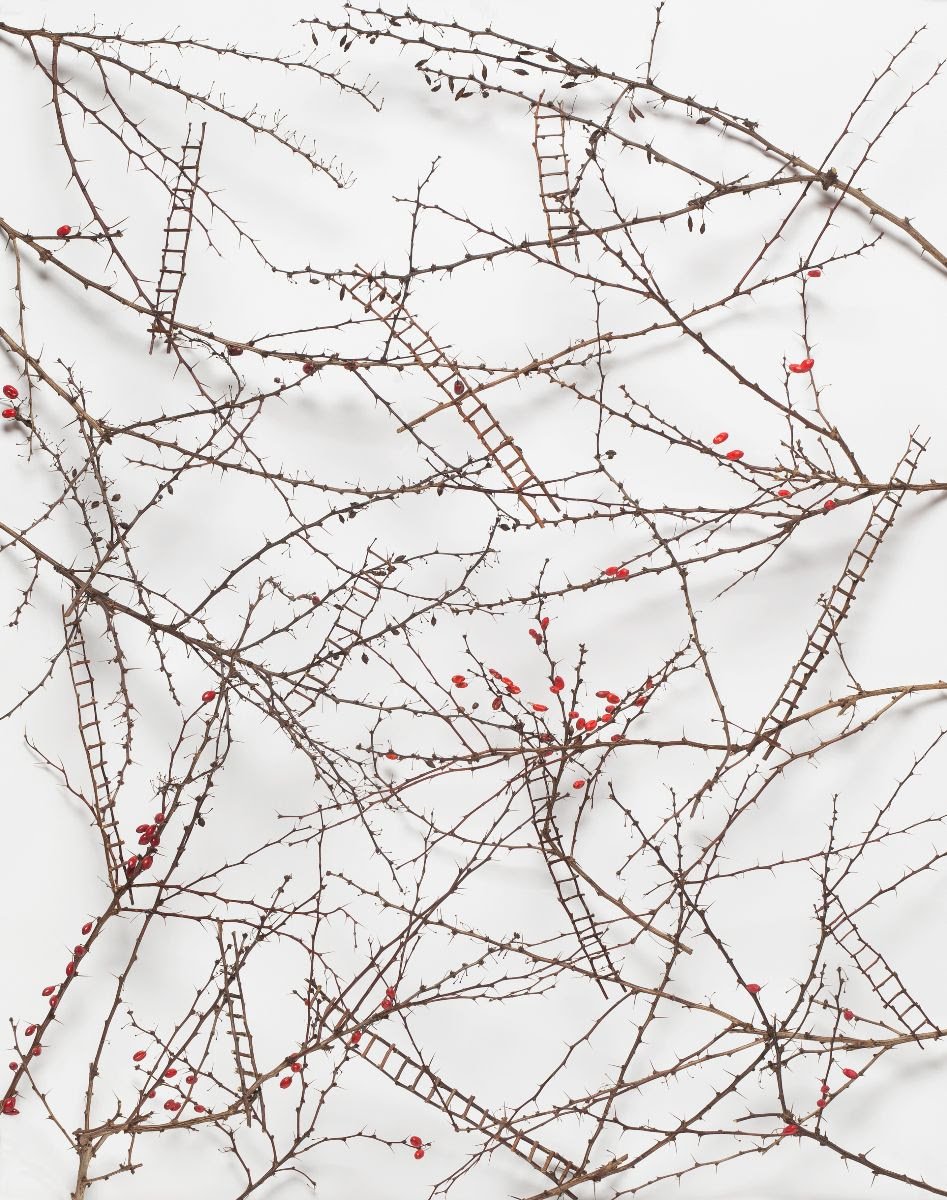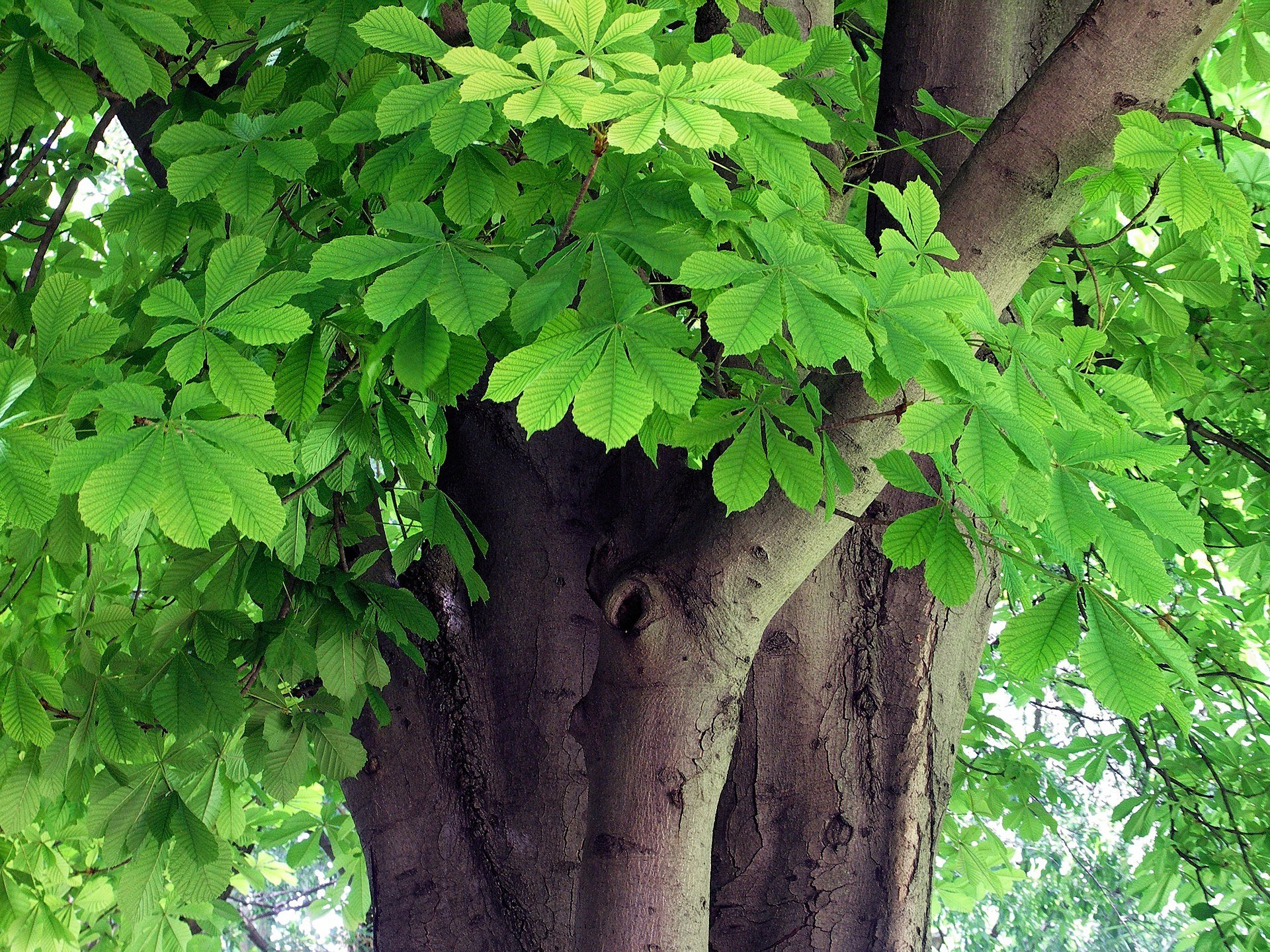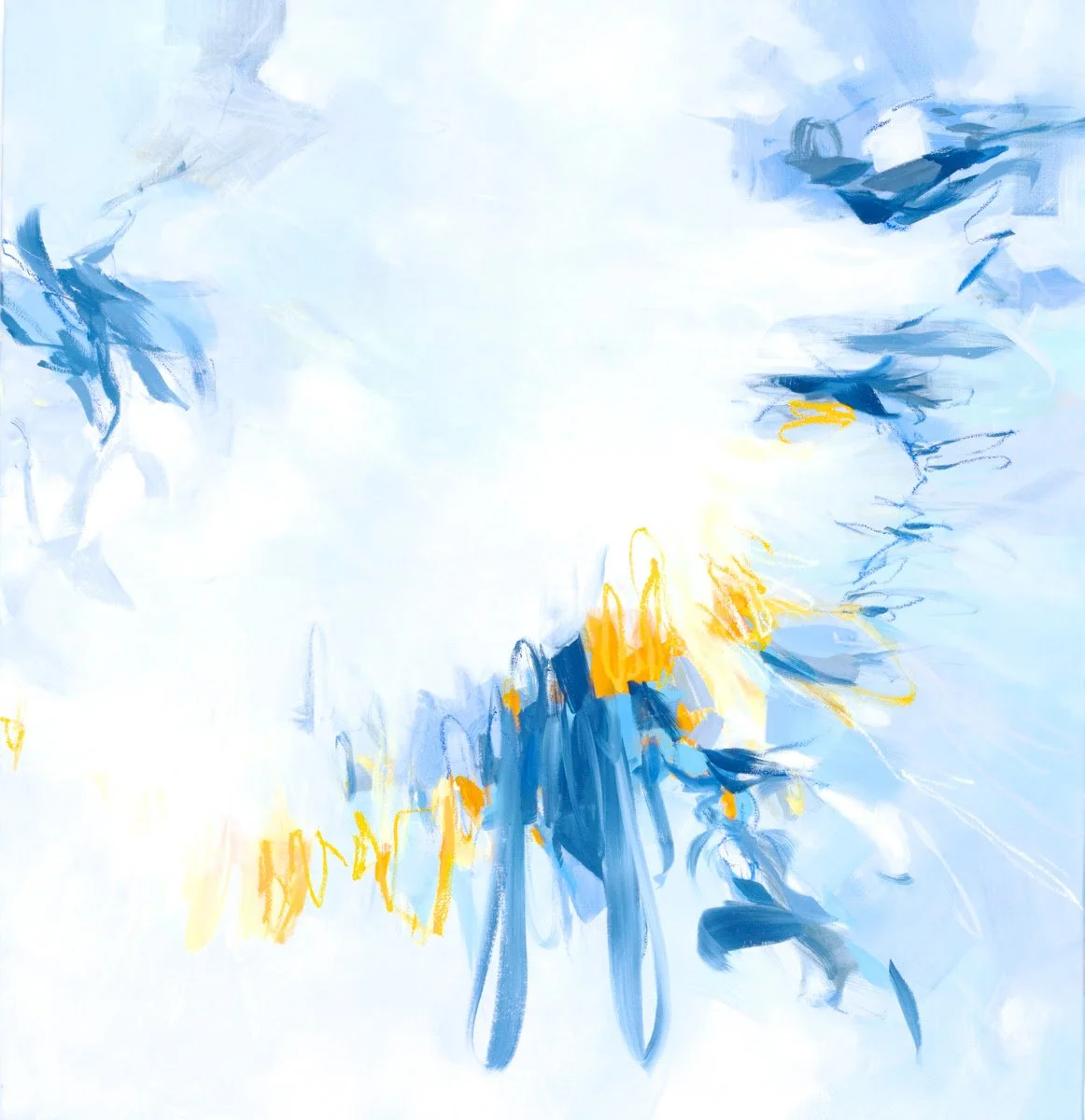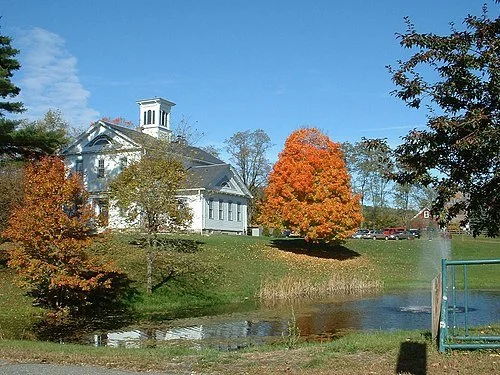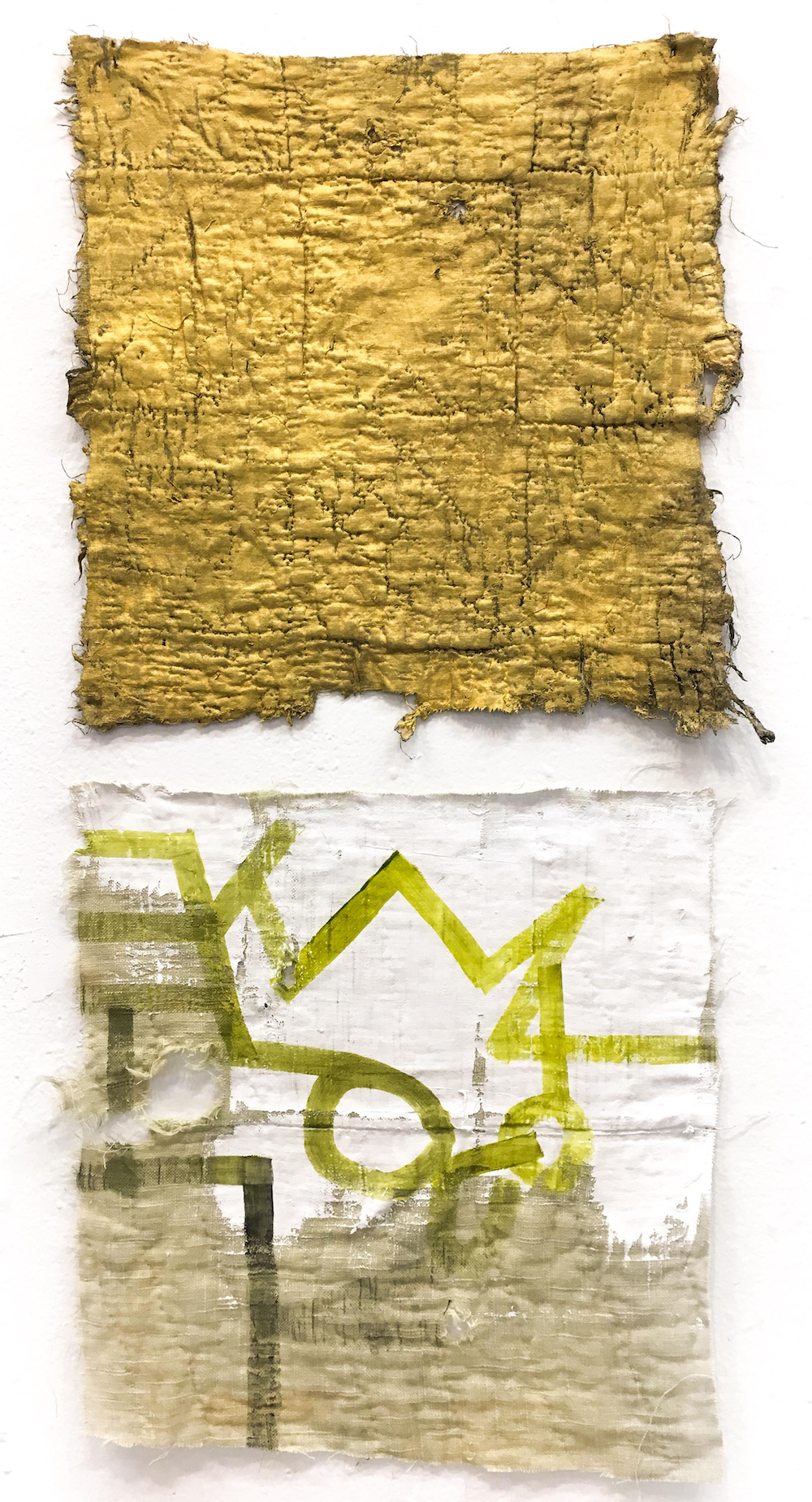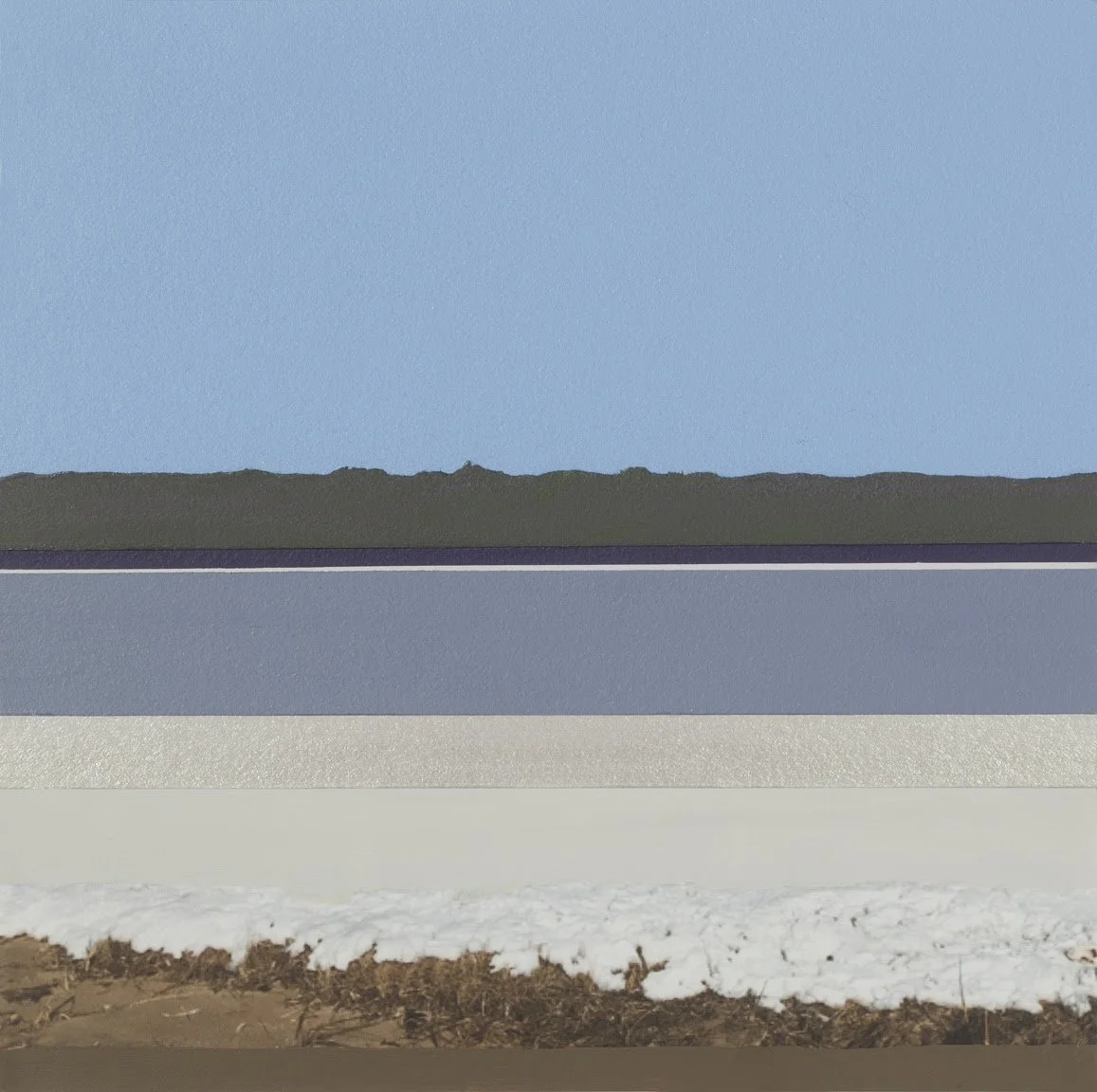
Carpet of life
From “Messages from the Marsh—parts 4-6’’(video still), by Amy Kaczur, at Kingston Gallery, Boston, through Dec. 1.
‘Comfort without answers’
“Here Yet,’’ by Lynda Schlosberg, in her show “Somewhere in Between,’ at Kingston Gallery, Boston, through Sept. 29.
The gallery says:
“The paintings in ‘Somewhere in Between’ span the last three years of an ever-shifting existence. Floating in a state of limbo somewhere between life and death, between here and there, between then and now and what is yet to be. Traversing wandering threads of individual and connected lives as they pass through time and space. Exploring uncertainty of the unknown and seeking comfort without answers.’’
‘Metaphor for life’
“Towards a Blue Planet” (color pencil on wood), by Massachusetts artist Stacey Cusher, in the group show “Everything Leaves a Mark,’’ at Kingston Gallery, Boston, April 3-28.
She says in her artist statement:
“Trees, forests and flowers are iconic and an endless source of inspiration. In drawing these, I locate different textures and emphasize the shapes of trees and differing values in graphite or blue color pencil to speak to their sturdiness and the capacity to withstand these times. They’re a metaphor for life. We have a constant relationship with them. As Sara Maitland, author of From The Forest, describes, “[r]ight from the beginning, the relationship between people and forest [and flora] was not primarily antagonistic and competitive, but symbiotic.”
“And from the slow process of creating drawings, floral paintings and animal portraits found in these gardens, forests and in unexpected places, a meditative presence occurs. There is a grandeur in nature and a spirit. Creating scenic worlds, even in still life paintings, segue into wonder, daydreaming, and contemplation. A child-like feeling occurs when anything seems possible: infinite immensity and infinite possibilities.’’
‘As Covid morphed’
“Lavender Light,’’ by Phyllis Ewen, in her show “My Mind’s Eye,’’ at Kingston Gallery, Boston, March 1-March 31. She lives in Somerville and Wellfleet, Mass.
She says:
“As Covid-19 continued and morphed, my art turned inward. A new series of lithographs reflected my changing state of mind and is continuing as is the pandemic. These lithographs come from MRI images of a brain.’’
“Guglielmo Marconi built the first transatlantic radio transmitter station on a bluff in South Wellfleet in 1901–1902. The first radio telegraph transmission from the United States to England was sent from this station on Jan. 18, 1903, a ceremonial telegram from President Theodore Roosevelt to King Edward VII. Most of the transmitter site is gone, however, as three quarters of the land it originally encompassed has been eroded into the sea. The South Wellfleet station's first call sign was "CC" for Cape Cod.’’
— Edited version of a Wikipedia entry
The ‘meaning of weight’
From Massachusetts-based arist Kledia Spiro’s show “Drawing in Air,’’ at Kingston Gallery, Boston, through Jan. 28.
The gallery says:
“Kledia Spiro’s solo exhibition ‘Drawing in Air’ delves into the fascinating interplay of weight, legacy, and the human experience.
”Over the last decade, {Albanian-born} Spiro has embarked on a quest to understand the meaning of ‘weight’ in people's lives. Spiro's project blurs the lines between information design and art, using drawings to create data for music production. In the gallery, Spiro will physically paint signature light drawings in mid-air. Spiro has collaborated with two diverse musicians, Lianna Sylvan and Kevin Baldwin, to translate her light drawings into a captivating music composition. Using sensors placed throughout the exhibition, each drawing triggers a unique sound experience for the visitor.’’
There’s a use for everything
“What Remains’’ (mixed media)., by Massachusetts-based artist and fencing coach Elif Soyer, in her show “Making Meaning,’’ at Kingston Gallery, Boston, Nov. 29-Dec. 30.
"Everyday takes figuring out all over again how to f***ing live.”
(Calamity Jane/Deadwood)
The gallery says:
“‘Making Meaning’’’ is a conglomeration of old and new ideas and experiments, culminating in fabrications, layered with both time and materials. For Soyer, the Calamity Jane quote from her favorite character and all time favorite show is true for most of us. Soyer ponders this existential question often, especially in the studio where, for her, making art is making meaning out of the mundane, through work and invested time. Oscillating between the interior landscape of the human body and the exterior landscape of her immediate environment, through collecting, layering or other seemingly obsessive processes, Soyer’s work has always had a very strong tie to time.’’
Our ‘precarious place’
“In the Wind ‘‘ (oil, acrylic and collage on stretched canvas), by Anne Sargent Walker, in her show “Out on a Limb,’’ at Kingston Gallery, Boston, Oct. 4-29
She says:
“My mixed media paintings explore the beauty, complexity and fragility of the natural world and our complicated relationship with it. The surface content of birds, flora and other creatures often degrades, peels back, dissolves or drips to reveal layers underneath, suggesting the planet’s warming, loss of habitat, species, the earth itself and of course us.
‘‘‘Out on a Limb’ refers to the precarious place we have arrived at. Mass extinction of species is at hand. Invasive species threaten our landscapes, A warming climate is making habitat for both humans and animals unlivable. There is good news too, but we must make changes now.’’
‘Visual equivalents’
“Scrip(t) Scraps, Version 1’’ (intaglio, relief prints on player piano scrolls with 5.5’ etched copper parentheses, copper mesh stuffed with shredded paper), by Somerville, Mass.-based artist Randy Garber, in her show “Scrip(t) Scraps,’’ at Kingston Gallery, Boston, Nov. 1-20.
She says:
‘“My work investigates perception and how meaning is deciphered. I have consistently—and persistently—focused on finding ways to visually express both the beauty and vagaries of communication. Profoundly hard of hearing since infancy and acutely aware of the potential for misinterpretation, I explore the spaces between silence and sound: confusion and clarity, chaos and precision.
“Interested in gaps between our five (known) senses and how they inform, influence and intercept one another, I aim to find visual equivalents that suggest the complicated processes in how we receive and make sense of information. I create structures and images that evoke, for instance, cochlea, ear drums, instruments, neural networks and language systems.’’
'Better Homes Than Gardens'
”Thank Your Lucky Stars’’ (custom view-master you with reel), by Krystal Brown, in her show “Better Homes Than Gardens,’’ at Kingston Gallery, Boston, Aug. 30-Oct 1.
The gallery explains:
That the show “confronts the current national housing crisis and the widening wealth gap head on through the lens of autobiography, asking the viewers to grapple with their complicity in the current situation, while laying bare Brown’s family’s struggles with poverty and housing in Boston during their childhood.’’
Beauty from the struggle
"To Slip Away Without a Sound” (dye sub aluminum), by Vaughn Sills, in her show “Joy and Sorrow Intertwined,’’ at Kingston Gallery, Boston, Oct. 4-Oct. 29.
The gallery says:
“Vaughn Sills’s compelling photographs create a stage for both the growth and decay, the birth and death, in nature. Her … compositions draw us into a timeless narrative, a metaphor for the struggles of human existence and our failing environment.’’
She is based in Cambridge, Mass., and Prince Edward Island.
Stare from the deep past
“Athenian fragment of a face,’’ (archival pigment print, oil, resin, wood ), by Boston-based artist Jennifer Liston Munson, in her show “Looking In + Looking Out,’’ at Kingston Gallery, Boston, July 5-July 30.
Her artist’s statement includes:
“Jennifer Liston Munson’s work for her show …. creates lenses for the viewer to look in and for the subjects themselves to look back out. Her selection of art objects, ghostly figures, and landscapes call into question historical collection practices, the complexity of narratives, and the notion of belonging. ‘Looking In + Looking Out’ incorporates images of objects held in museum collections, photographs of unknown relatives, and abandoned historically significant interiors. In some of the pieces, Liston Munson makes the landscape the subject; spaces, trees, and enigmatic watery pools that remain while the bodies they contain dissolve to time, as layers of paint ooze from the edges to mark the art making process and the past. Other works look at architecture and history close up, making the past present.’’
#Kingston Gallery
Maybe don’t go any further
Photo by Massachusetts-based artist Chantal Zakari, in her show “Chantal Zakari: New Works,’’ at Kingston Gallery, Boston, Aug. 30-Oct. 1
She says:
“I am inspired by social phenomena and position myself in relation to the public. I freely combine research methodologies and artistic strategies from various disciplines such as photography, documentary, graphic design, performance, storytelling, installation, and social interventions. Text and language are an inherent part of my work; interviews, personal narrative, found text, all have the potential to contextualize the imagery. My work is project based. As I explore projects over the span of several years, the work can transform into exhibitions, installations, publications, performances and street happenings. Designing and redesigning the work into different contexts brings me a greater understanding of the ideas, and makes it more accessible to different groups of audiences.”
The mysteries of gray/grey
“Upward” (mushroom spores on paper), by western Massachusetts-based artist Madge Evers, in the group show “Grey Areas,’’ at Kingston Gallery, Boston, Aug. 2-27
The gallery says:
This year’s annual exhibition by Kingston Gallery’s Associate Artists explores the theme of “Grey Areas’’ from different perspectives and media. …The 10 artists interpret our world with divergent approaches to both the enigmatic concept and the color grey….They explore liminal places, ideas, and eras that generate questions - many without answers. Responding to the existential areas of an unknowable future or the space between ecosystems, they wonder how to acknowledge non-human collaborators, the myriad ‘what-ifs’ of depression, and the question of secrecy and abuses in institutions and systems of government that operate in obscurity. The diversity of work plays with grey’s ability to take on hue and enliven color, consider the spin of the stories we tell, uncertainty in understanding our world, and the difficulty of truly knowing the space one occupies in that world.’’
xxx
“Madge Evers has adapted the spore print, a mushroom identification tool typically used by mycologists and foragers, to create biomorphic monochromatic works on paper. Like the wind and other animals, she spreads the spores of mushrooms; germinates their powdery spores as they land on paper and creates her version of a fruiting body - it forms a two-dimensional image rather than toadstool. In this interdependence with mushrooms, she wonders: How do I best acknowledge my unwitting collaborators?’’
View from Mount Holyoke, Northampton, Mass., after a thunderstorm—The Oxbow (of the Connecticut River) (1836), by Thomas Cole
We all feel the ‘presence of absence’
“Presence of Absence: Looking In + Looking Out #1” (pigment print, lucite oil and wood), by Boston-based artist Jennifer Liston Munson, in her show “Presence of Absence,’’ at Kingston Gallery, Boston, July 4-July 30
The gallery says:
”Ghostly figures in found photographs of unnamed relatives from Jennifer Liston Munson’s unknown past occupy a landscape of inherited memory. Photographs are buried in resin, holding the figures in time and space, allowing them to look out as we look in. Liston Munson asks the viewer to linger on these elegiac images as an act of resurrection, to substantiate the precariousness of personal histories and the delicate process of perception.
“In some of the pieces, Liston Munson makes the landscape the subject; spaces, trees, and enigmatic watery pools that remain while the bodies they contain dissolve to time, as layers of paint ooze from the edges to mark the art-making process and the past. Other works look at architecture and history close up, making the past present. A series from an interior room of the Alcazar in Toledo, Spain captures bullet holes in worn wallpaper caught in the crossfire of the Spanish Civil War. New sculptural towers layer colorized resin blocks that obscure buried images of objects normally held in museum vitrines, detached from their cultures of origin for eternity.’’
‘Re-presented nature’
”Forestland” (pencil and gouache on Strathmore paper), by Boston area artist Hilary Tolan, in her show “In This Place,’’ at Kingston Gallery, Boston,. May 3-28.
Ms. Tolan’s artist statement:
“Hilary Tolan takes viewers into a world where nature is re-presented. She references both suburban gardens and the ‘wild’ nature of the forest and field. Tolan exploits images of fragmented nature and its possible meanings. She explores the fact that nature which was once alive and embedded in an environment, that existed as a part of a system, is now extracted and defunct of its original purpose. Tolan asks the viewer to consider the nature of time. In her work, she reflects the desire to keep and save things. Thoughts of memory, imagined landscapes and longing pervade much of its quiet beauty.’’
Plants as metaphor
“Journey “ (Japanese barberry) (detail work in process), by Boston-based artist Ann Wessmann, in her show “Cycle,’’ at Kingston Gallery, Boston, May 31-July 2.
The gallery says (this has been edited):
“In her studio practice, Ann Wessmann explores themes relating to time, memory, beauty and the ephemeral, with a focus on the strength and fragility of human beings and the natural world. Her most recent work pays tribute to trees, and the natural world by extension, by focusing on a horse chestnut tree at her childhood home, in Scituate, Mass., and the 170-foot-long hedge on two sides of the yard. This tree and hedge have been a part of her life for almost 70 years, going through their cycle of life as Wessmann goes through hers. While Wessmann no longer lives full time at her childhood home, she takes care of the yard year after year in the continuing seasonal cycle.
“Wessmann’s process is close observation and discovery, gathering and sorting various plant materials — leaves, flowers, twigs, nuts and hulls — that fall to the ground from the horse chestnut tree. These materials are essential to the life of the tree, but they have served their natural purpose and are generally overlooked and discarded by humans. Wessmann finds them beautiful and compelling. The thorny hedge, which she has struggled to maintain for many years, caught her attention in the past year, and the installation “Journey,’’ made with hedge clippings, for Wessmann became a metaphor for the times in which we live.”
Leaves and trunk of a horse chestnut tree. There are far fewer such trees these days.
— Photo by Alvesgaspar
The fruit of the Horse chestnut tree. They are not true nuts, but rather capsules.
— Photo by Solipsist
‘Humble observer of the world’
“The Air We Breathe” (oil on canvas), by Bernardson, Mass.-based artist Cameron Schmitz, in her show, “The Space Between,’’ at Kingston Gallery, Boston, May 3-28.
The gallery says:
“Painting is a metaphor for Cameron Schmitz’s perception of life, where she explores the inspiration of tender relationships, and the wonder and despair of being a woman, mother, working artist, and humble observer of the world. Working primarily in the mode of intuitive abstraction, Schmitz has discovered how a painting can create space for both an understanding of life and the valuable admission of not knowing. Her approach to abstract painting is informed by a background in both landscape and figurative painting.”
This building, now housing the Bernardson Historical Society, was formerly the home of the historically important educational institution called The Powers Institute.
‘A certain impermanence’
“The Needle’s Mark and Maquoketa” (quilt fragments, gesso, acrylic), by Susan Denniston, in her show “Voices Carry,’’ at Kingston Gallery, Boston, Jan. 5-29. She lives near the ocean south of Boston.
The gallery says:
“When artists work with materials created and shaped by previous generations, it evokes memories and pulls a thread from the past through the present and into the future. Working with inherited, delicate cloth, Denniston listens and acknowledges our fragility, our vulnerability, and our certain impermanence.’’
Read more.
Expand and contract
“Edge of Snow” (acrylic and photo on paper), by Cape Cod-based Jane Lincoln, at Kingston Gallery, Boston.
‘Fragile systems of beauty’
“Breakthrough” (sculptural collage, mixed media including wood panels, tree bark, acryli and plexiglass), by Boston area artist Luanne Witkowski, in her show “Clarity,’’ at Kingston Gallery, Boston, March 1-April 2.
The gallery says:
Ms. Witkowski “uses both found natural materials and fabricated cast-offs and scraps, focusing on composition, recurrent pattern, minimalist form, and color to create an artistic response to the fragile systems of beauty and the raw power that exist in both the natural world and urban landscapes. For the artist, this response is accessible through the contemplative creative process of perception, when we allow ourselves to relax into our senses. Witkowski’s daily routines - walking through forests, parks and countryside of wildlife, flora and fauna followed by engagement with city streets, glass and artificial light - interweave the interaction and juxtaposition of her various materials. In doing so, she recalls the shared experiences grounded in each of us: creating a perceptual and spiritual relationship for recognition of and solace for the self. This approach to the identification of the individual with landscape and environment is enlarged by a desire to discover and connect with the particular indwelling essence or energy of clarity.’’


